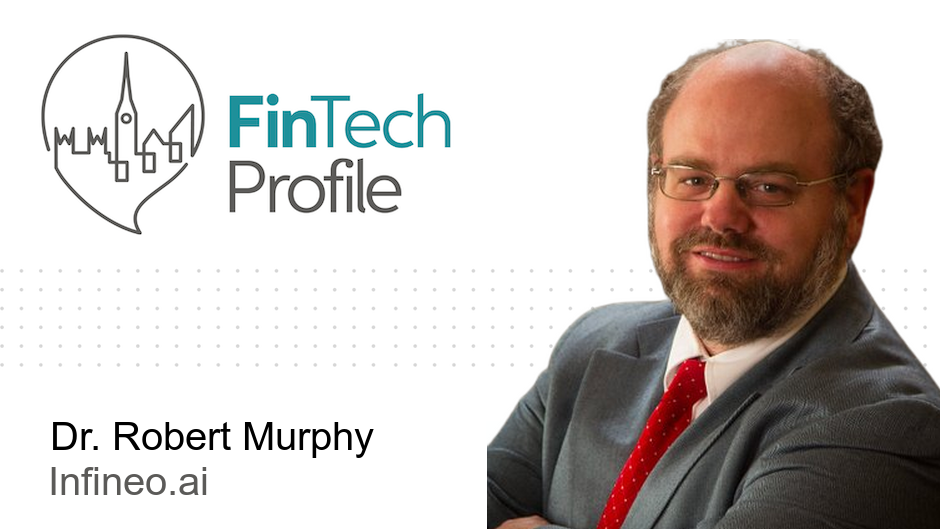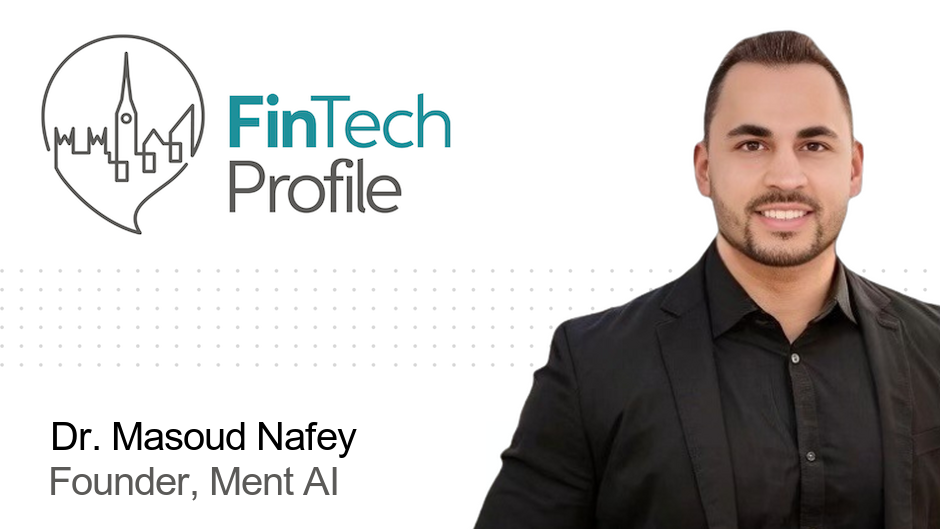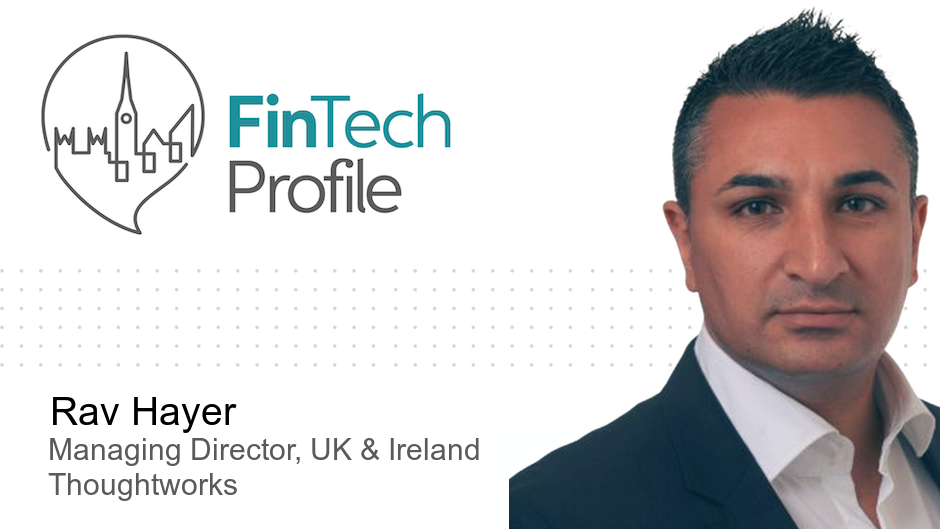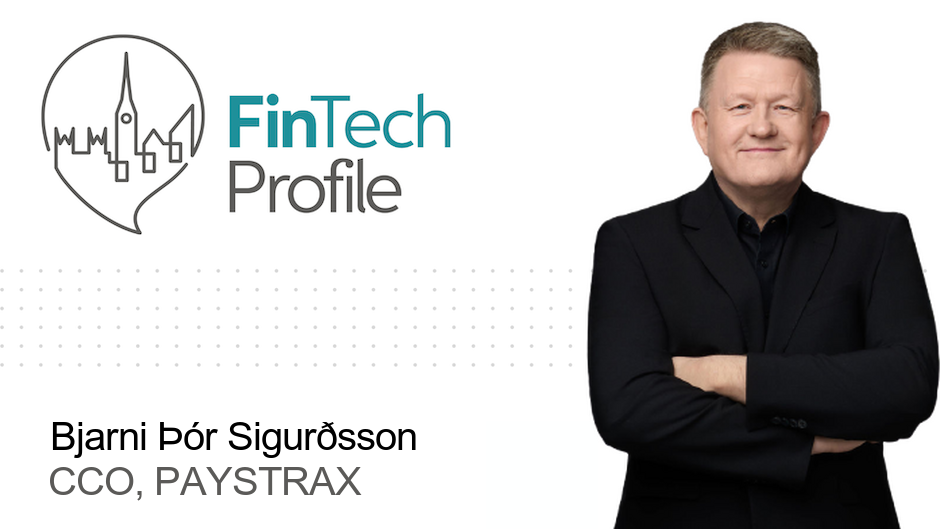Robert P. Murphy, Chief Economist of infineo

Today we're meeting Robert P. Murphy, Chief Economist at infineo. They specialise in using cutting-edge blockchain and AI technologies to power an integrated ecosystem designed to transform life insurance into a more intelligent and accessible asset class.
Over to you Robert - my questions are in bold:
Who are you and what's your background?
I got my PhD in economics from New York University and held academic positions at Hillsdale College and, more recently, Texas Tech. Although I still publish peer-reviewed papers on economic theory, I am now fully planted in the financial sector where there is more innovation and the necessity of turning a profit. As part of my consultation work, I helped develop a training course for financial professionals on the use of life insurance as a cash management vehicle. In addition, I co-authored a primer on the economics of Bitcoin. When I learned of infineo—a company that is putting life insurance on the blockchain—I knew I had to be a part of the team.
What is your job title and what are your general responsibilities?
I am the Chief Economist at infineo. My responsibilities can be divided into three buckets: (A) White Papers on the general theory of the products and services that we are developing, such as a calculation of the Sharpe Ratio for Whole Life insurance (versus other asset classes). (B) Public outreach, including infineo-produced podcast episodes and blog posts, but also many external interviews and op eds. (C) Financial modelling for the products and services we are developing, for infineo's internal use.
Can you give us an overview of your business?
infineo is a high-growth fintech company revolutionizing the life insurance industry by transforming traditionally illiquid policies into intelligent, accessible, and yield-generating financial assets. We leverage blockchain and AI to modernize how institutions originate, manage, and optimize life insurance-based benefit plans—making these assets more transparent, liquid, and valuable.
We primarily serve mission-driven organizations such as credit unions and nonprofit healthcare systems, helping them offer more compliant and effective executive benefit plans. One of our core innovations, LifeNotes, turns legacy life insurance strategies into pooled, trust-backed investments with improved liquidity, stable timelines, and enhanced financial outcomes.
By digitizing and securitizing life insurance portfolios, we unlock new value for institutional investors while simplifying accounting and reducing risk for plan sponsors and participants. With over $400 million in assets managed, infineo is expanding into adjacent markets like universities and banks—driving financial certainty through modernized insurance infrastructure.
Tell us how you are funded?
infineo has been funded through a combination of internal capital, private investors, and strategic partners with deep expertise in insurance, finance, and technology. We've taken a deliberate, disciplined approach to growth—focusing on revenue-generating products and regulatory credibility.
This foundation has allowed us to build a vertically integrated business with real assets under management and a strong institutional client base, with no additional need for outside capital. As we continue to scale our LifeNotes offering and launch new digital insurance solutions, we may however explore strategic growth capital to accelerate expansion and support our mission of making life insurance a more intelligent and global financial asset.
What's the origin story? Why did you start the company? To solve what problems?
infineo seeks to marry the conservative, dependable asset of life insurance with the flexibility, convenience, and speed of blockchain technology. The founding team understood the strengths and weaknesses of life insurance and Bitcoin, and by tokenizing life insurance, we seek to create a new option for our customers that combines the best of both worlds.
Who are your target customers? What's your revenue model?
infineo primarily serves institutional clients that use life insurance to fund executive benefit plans, including credit unions, nonprofit healthcare systems, and universities. These organizations often face challenges related to long-duration illiquidity, accounting complexity, and regulatory scrutiny when using traditional life insurance structures. Our solutions help modernize and optimize these benefit arrangements by transforming policies into higher-performing, more liquid, and easier-to-manage financial assets.
Our revenue model is built around several key components. We generate fees from structuring and administering life insurance plans for institutional clients. As these assets are pooled and professionally managed, we earn asset management fees based on performance and scale. We also monetize our proprietary blockchain infrastructure through digitization and tokenization services, enabling more transparent and tradable insurance-backed assets. As we expand our reach globally, we also expect to generate revenue from the distribution and management of newly designed digital life insurance products.
With over $400 million in assets under management and more than 75 institutional participants, our model has proven effective in delivering both financial and operational value. As we continue to scale into new markets such as regional banks and for-profit institutions, we're focused on meeting growing demand for compliant, yield-enhancing, and tech-enabled insurance solutions.
If you had a magic wand, what one thing would you change in the banking and/or FinTech sector?
There are many layers of regulations that, although one can understand their motivation for consumer protection, end up stifling innovation and ironically may prevent "the little guy" from taking advantage of a beneficial financial product and/or may give a false sense of security when investors should be exercising more due diligence. I would prefer a regulatory landscape that is more focused on disclosure and transparency but ultimately gives the decision-making power to the investor rather than paternalistically making those decisions for him or her. By streamlining certain investment opportunities, this approach could reduce the "number of hands in the cookie jar" and deliver more value to the end investor.
What is your message for the larger players in the Financial Services marketplace?
The perception is evolving on its own, but my message to the larger players is to stop thinking of blockchain-based finance as "volatile crypto" that sits in the corner, separate from the rest of traditional finance. Yes, Bitcoin and other cryptocurrencies are volatile, but the underlying rails of blockchain are simply a new technology that can be used for other, stable assets (such as life insurance). The Gutenberg Bible is often cited as the first book coming off a modern printing press, but that technology was of course used to print many other books afterward.
Where do you get your Financial Services/FinTech industry news from?
I am a regular participant on the WOLF Crypto RWA Tokenization X Space every week, so that lets me keep tabs on the latest developments in that sector. Whenever someone is putting a new type of asset on the blockchain, this is the go-to place to make the announcement.
Can you list 3 people you rate from the FinTech and/or Financial Services sector that we should be following on LinkedIn, and why?
- Cade Bergman - WOLF Crypto
Cade leads business development at WOLF Crypto and is at the forefront of real-world asset tokenization within the crypto-native community. He brings a strong pulse on emerging infrastructure, cross-chain initiatives, and the intersection of DeFi and institutional finance. - Herwig Konings - Security Token Market (STM)
Herwig is a pioneer in the security token space. As co-founder of STM, he's built one of the leading media and data platforms focused on tokenized securities. He regularly shares valuable insights on regulation, capital markets evolution, and digital asset adoption. - Anthony Moro - Provenance Blockchain Labs
As CEO of Provenance Blockchain Labs, Anthony is leading one of the most advanced Layer 1 blockchains purpose-built for financial services. With deep expertise in both TradFi and DeFi, he's bridging the gap between institutional capital markets and tokenized infrastructure. His leadership has been instrumental in Provenance's growth and in enabling projects like ours to scale trustlessly and compliantly on-chain.
What FinTech services (and/or apps) do you personally use?
One FinTech platform I use regularly is Perplexity. It is my go-to AI research assistant. It helps me quickly explore emerging trends in tokenization, regulatory updates, and capital markets. The ability to ask natural-language questions and get sourced, up-to-date answers is incredibly powerful, especially in fast-moving sectors like blockchain and RWA finance.
What's the best new FinTech product or service you've seen recently?
One of the most exciting FinTech products right now is The Ledger by infineo - a free tool that allows anyone with a life insurance policy to digitize and securely manage their policy on-chain. Built on proprietary blockchain infrastructure, The Ledger is transforming life insurance into a transparent, portable, and intelligent asset. Even more compelling, we're now building new products on top of that infrastructure—including instant liquidity solutions, and next-gen insurance investment vehicles—pushing the boundaries of how life insurance can create real financial utility. infineo now has minted $621M of life insurance on the Provenance Blockchain via The Ledger.
Finally, let's talk predictions. What trends do you think are going to define the next few years in the FinTech sector?
I think passage of stablecoin legislation (whether the GENIUS Act or some variant of it) will provide regulatory certainty that fosters much more widespread holding of USD-denominated stablecoins, even among institutional players who haven't traditionally been in the blockchain space. This will further legitimize tokenized RWAs, and continue making blockchain-based assets as commonplace as using email has become.
Thank you very much, Robert!
Read more about Robert P. Murphy on LinkedIn and find out more about infineo at infineo.ai.




